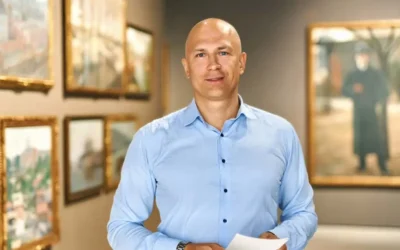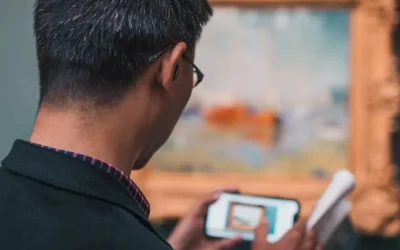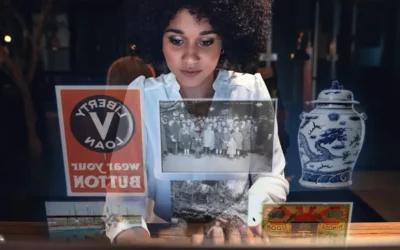Museum TrendsWatch 2019: Self-Care

Rachael Cristine Woody
I attended the American Alliance of Museums (AAM) annual conference held in New Orleans, May 2019. The conference hosted a TrendsWatch 2019 session where Founding Director at the Center for the Future of Museums (CFM), Elizabeth Merritt reviewed the CFM’s TrendsWatch 2019 report, which includes an explanation and review of societal and museum impact for each trend. Read on for my synopsis and observations on the fourth trend to watch (Self-Care) as part of your museum strategy; I write about the others in additional posts.
Where Does Our Stress Come From?
It’s no secret that we’re stressed. In fact, the numbers indicate that our stress has gone up, with 39% of people stating they are “more anxious than last year” according to the American Psychiatric Association’s 2018 report referenced in TrendsWatch. The US is experiencing stress at an increasing rate due to: hyper-connectivity (phones, internet, and social media) and social and political circumstances—in addition to the “lack of a comprehensive support system for the basics of life, such as health care, paid sick time, and parental leave.” And those who face inherent social inequality suffer a disproportionate (and additional) amount of stress due to gender, race, class, or sexual orientation.
When reflecting on why the US culture may have ended up this way, Merritt references the “Protestant heritage of personal responsibility and belief in self-reliance.” She posits that this legacy could have led to the current work culture “in which employees demonstrate their value through self-sacrifice, and working long hours is a marker of success.”
Stress and the Museum Professional
While Merritt doesn’t dive into the details of why museum professionals experience stress, it can be extrapolated that museums host a culture of high-stress due to the following:
- There are not enough resources leading to increased job pressure
- Employees are substantially underpaid especially when student loans for required higher-education degrees are factored in
- There are limited or no benefits for physical and mental wellbeing
- We work with emotionally difficult subject matter
- We frequently face obstacles that impact collection and community well-being
- We work in a space to provide support to under-served and vulnerable populations
- We frequently experience toxic or negative workplace situations with little to no mechanisms in place to find relief
Stress is Expensive
Stress is damaging to mental and physical health and can lead to expensive medical conditions and treatments. Stress is also expensive to places of employment. According to Merritt: “In the workplace, stress leads to absenteeism, disengagement, decreased productivity, burnout, and high turnover.” The overall cost to both companies and people is estimated at $300 billion a year.
The Cost to Museums
For museums the cost of stress and subsequent loss of employees has a not-so-hidden cost: loss in knowledge, experience, and institutional memory. On top of the intangible cost is a literal one for the museum as it engages in recruitment, hiring, and training of a new person to replace the lost employee. Furthermore, when an employee is lost their former peers also suffer further as they face a temporary or permanent loss of a position (FTE), loss of services available that were previously provided by the lost employee, and a loss of project momentum – all of which have a compound effect.
Museum To-Do List
TrendsWatch recommends the following potential to-do items as part of a museum strategy:
- Speak with employees about the conditions that drive stress in their jobs
- Review policies and identify practices that can positively contribute to employee well-being
- Conduct an annual quality of life survey to identify challenges, opportunities, and progress
- Support employee efforts to facilitate self-care within the organization
- Set a positive example
- Continually make the business case for selfcare
- Offer self-care programs for the community
And I would add:
Though there are many societal and systemic issues at work here, there are actions that both employers and employees can take as part of a museum strategy.
Employees
Self-care is an $11 billion industry and ranges from the superficial to substantial. Investigate what self-care options are available to you through your employer, your insurance, and your community. Select a range of options that provide you with one or more of the following: time to disconnect, relaxation and rejuvenation, mental health support, physical health, social connection, and fulfillment.
Museums
There are several low-cost and no-cost options to explore, such as: flexible work schedules, a work from home policy, designating a workplace “de-stress” room (like they did at the AAM conference), free tea or other beverages, access to learning opportunities, support for child care, matching donations to charity, time off for volunteering, time off in trade for working night and weekend events, and discounts or reciprocal membership to peer organizations.

Rachael Cristine Woody
Consultant, author, and blogger Rachael Cristine Woody advises on museum strategy, collections management and grant writing for a wide variety of clients. Read more of Rachael’s posts on museum strategies for success. Learn about Lucidea’s Argus solution for museum collections management and digitization, which can be used to support a wide variety of museum strategies.
Similar Posts
Storytelling to Inspire Reflection Using Museum Collections Online
Storytelling with online collections is impactful, whether we choose online-only or as part of a hybrid approach to museum exhibitions.
Museum Collections Online: Learning Through Storytelling
Digitizing museum collections introduces new and engaging opportunities for storytelling. By leveraging digital surrogates—essentially online representations of physical objects—museums can enhance how they present narratives and information to audiences.
The Role of Museum Collections Online in Storytelling & Audience Engagement
Storytelling with museum collections online allows for a great degree of flexibility, offers additional detail, and lends a dynamism that is difficult to produce within a physical exhibition.
Examples of How Archives Can Be Used to Elevate Museum Collections
Last week we reviewed how archives can enhance museum collections online. This week will continue our work with an examination of specific examples, including what items different types of archives may contain and where to capture this data.




Leave a Comment
Comments are reviewed and must adhere to our comments policy.
0 Comments